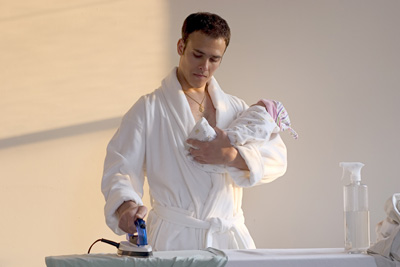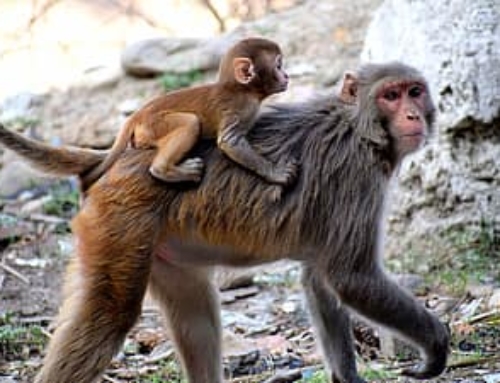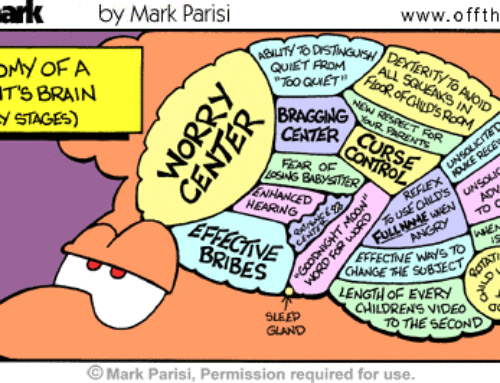Sometimes there’s research that sounds so ridiculous you have to cover it. Especially when you realize that it’s not ridiculous, and in fact, there’s good evolutionary theory behind it. Enter the research – that linking the size of men’s testicles to the degree of involvement in parenting[1].
The findings that made the news were boiled down to the idea that men with smaller testicles make better, or more involved, fathers. But do smaller balls = better fathers? One author from the study certainly suggests this when he says, “I wouldn’t want to say that men with large testes are always bad fathers but our data show a tendency for them to be less involved in things like changing diapers, bathing children, preparing meals, taking them to the doctor and things like that.” (From an interview with the Huffington Post.)
Let’s look closer to see exactly what we can determine.
The study looked at 70 fathers – predominantly Caucasian – who were married or cohabitating with the child’s biological mother. The men were all between the ages of 21 and 55. The authors measured testicular volume, testosterone levels, brain activity in response to images of one’s own child, and then behavioural questionnaires of parental involvement (answered by both the fathers and mothers, looking at things like changing diapers, doing bath time, play, etc.). Parental caregiving, as measured by a combination of the parental questionnaires, was negatively correlated with both testicular volume and testosterone levels, but was positively related to brain activity in the ventral tegmental area (an area associated with reward and motivation) (which was also negatively correlated with testicular volume). So yes, we see several relationships that suggest testicular volume is linked to subpar paternal involvement.
Although I believe this provides initial evidence that at this given point when a man is already a father, testicular size is related to parenting, it does not mean we can judge men prior to becoming fathers or say that testicular volume is the cause of subpar involvement. Why not? Well, there’s research that shows men’s testosterone levels (which were positively correlated with testicular size in the current study) significantly decline as they become fathers[2]. In this longitudinal study, the authors found that testosterone levels significantly decreased as men became fathers (but not partnered) and that the amount of decrease was largest during the youngest infancy stages, and that as the child aged, the levels of testosterone increased again, but remained significantly lower than men who were never fathers. But most importantly, the degree of change varied based on the involvement of the father (with age of child controlled for, along with other confounds). Fathers who were involved with their children – even hitting just an hour a day of involvement – showed significant decreases relative to fathers who reported no caregiving involvement.
Therefore, it seems equally plausible that the most recent study is showing that the father’s lack of involvement in caregiving has stunted the decrease in testosterone that accompanies paternal involvement. Remember: Testosterone and testicular volume are intertwined with testosterone leading to the increase in size in testicular volume via sperm count[3] (though excess external testosterone can lead to low sperm count, why it has been considered for use as a male contraception[4]). [Note that the testes produce testosterone, and yet, testosterone levels precede changes in testicular size or sperm count, at least in longitudinal studies.] A further point is that it doesn’t include individual differences. If decreases are expected with offspring involvement, comparing the testicular volume differential between pre- and post-child would be a better indicator of involvement.
Given their intertwined nature and the correlational nature of the new research, we simply cannot say that higher testicular volume is the cause of the lack of paternal involvement and may be a reflection of the lack of involvement. This could also explain the brain activity findings as a father who is not involved may not respond to images of his offspring – after all, he’s not involved so why would we expect to see activation of a brain region associated with motivation and reward? In short, we wouldn’t.
So it seems, then, that size does matter. Just possibly not in the way we thought. In turn, women (and men) may want to look for other predictors of whether their male partner will be a good father outside of the size of their balls.
[1] Mascaro JS, Hackett PD, Rilling JK. Testicular volume is inversely correlated with nurturing-related brain activity in human fathers. PNAS 2013; doi:10.1073/pnas.1305579110.
[2] Gettler LT, McDade TW, Feranil AB, Kuzawa CW. Longitudinal evidence that fatherhood decreases testosterone in human males. PNAS 2011;
[3] Mooradian AD, Morley JE, Korenman SG. Biological actions of androgens. Endocrine Review 1987; 8: 1-28.
[4] Palacios A, McClure RD, Campfield A, Swerdloff RS. Effect of testosterone enanthate on testis size. Journal of Urology 1981; 126: 46-8.







Very interesting as always.
thanks Tracy!
One thing that comes to mind here is it’s basically a lower testosterone thing. Well men’s testosterone lowers naturally as they age and cultures the world over have long matched older men with younger women. It seems likely that more natural societies know that the best match for a women’s most fertile years (16-25) is an older man (25-35) whose testosterone has naturally begun to flag. It’s hardly an oddity to say women mature into the role of caregiver earlier than do men. Men, it seems, seem far more suited to start families later in life than do women.